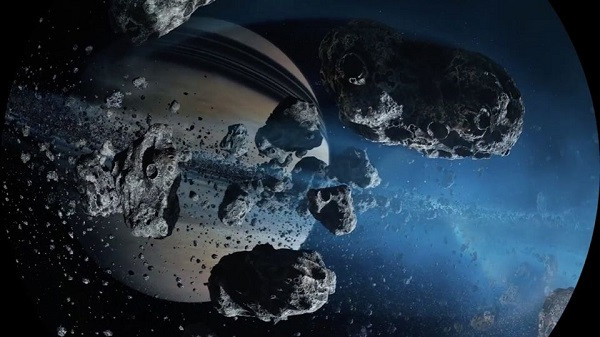A Galactic Adventure Awaits with Mission Interstellar: The Future of Space Exploration

IIE Digital Desk : The future of space exploration has taken an exciting new turn with the announcement of Mission Interstellar, a groundbreaking initiative set to push the boundaries of human capabilities and technology. Set for launch in 2026, Mission Interstellar promises to be one of the most ambitious and technologically advanced space missions ever undertaken, offering a thrilling glimpse into the possibilities of interstellar travel.
The Vision Behind Mission Interstellar
Mission Interstellar is being spearheaded by a coalition of private companies, government space agencies, and international collaborators, all coming together to explore the uncharted reaches beyond our solar system. The project’s primary goal is to send a spacecraft on a journey toward a nearby star system—Proxima Centauri, located just over four light-years away from Earth.
This mission is a direct response to the growing interest in space exploration, particularly in the realm of interstellar travel, which has long been the stuff of science fiction. Unlike previous missions that have focused on planets and moons within our own solar system, Mission Interstellar will aim to achieve a historic first: sending a craft beyond the confines of our solar system to explore another star system. Proxima Centauri is the closest known star to Earth that might harbor planets in the habitable zone, making it an ideal candidate for exploration.
Revolutionary Technology and Propulsion Systems
One of the most exciting aspects of Mission Interstellar is the innovative propulsion technology that will power the spacecraft. Traditional rocket engines are not viable for interstellar travel due to the immense distances and time required. Instead, the mission will rely on cutting-edge propulsion systems that have been in development for years.
At the heart of the mission’s propulsion is a revolutionary concept known as Breakthrough Starshot, an initiative backed by both private companies and scientific institutions. The technology behind Breakthrough Starshot involves tiny, lightweight spacecraft known as StarChips, which are propelled by powerful lasers aimed at the craft from Earth. These spacecraft, which weigh just a few grams, are equipped with advanced sensors and cameras to send back valuable data during their journey.
This laser propulsion system could potentially accelerate the StarChips to speeds up to 20% of the speed of light, dramatically reducing travel time to Proxima Centauri. While this may still seem like a far-off prospect, the technology represents a leap forward in the search for practical methods of interstellar travel, making the dream of reaching another star system a tangible goal for future generations.
The Role of Artificial Intelligence and Autonomous Systems
In addition to the propulsion technology, artificial intelligence (AI) and autonomous systems will play a central role in Mission Interstellar. Given the vast distances involved and the inability to directly control the spacecraft in real-time, AI-driven systems will manage many aspects of the mission. These systems will be responsible for navigating the spacecraft, performing scientific experiments, and transmitting data back to Earth.
AI will also be crucial in analyzing the immense amounts of data that will be collected during the mission. The spacecraft will capture images, spectra, and other forms of data that could provide unprecedented insights into the star systems and planets beyond our solar system. This data will be processed by AI algorithms to identify patterns, anomalies, and signs of extraterrestrial life, potentially answering fundamental questions about the existence of life beyond Earth.
The Promise of a New Era in Space Exploration
Mission Interstellar represents a bold step toward realizing the dream of exploring distant star systems. It marks the beginning of an era where humanity is not limited to exploring our own solar system but can reach out to other stars, studying them up close and in greater detail than ever before. The success of the mission could open the door to further interstellar exploration, with new missions targeting other nearby star systems.
For the space community, the stakes are incredibly high. The mission’s potential to uncover new worlds, understand the origins of life, and expand humanity's horizons into the cosmos is unparalleled. If successful, Mission Interstellar could serve as the launching pad for future generations of explorers who will one day set foot on distant planets in other star systems, marking the beginning of humanity's journey among the stars.
As the launch date for Mission Interstellar approaches, excitement is building among space enthusiasts, scientists, and explorers alike. The mission promises not just a galactic adventure but a new chapter in human history, where the final frontier becomes a reality, and the stars no longer seem so far away.
You might also like!















